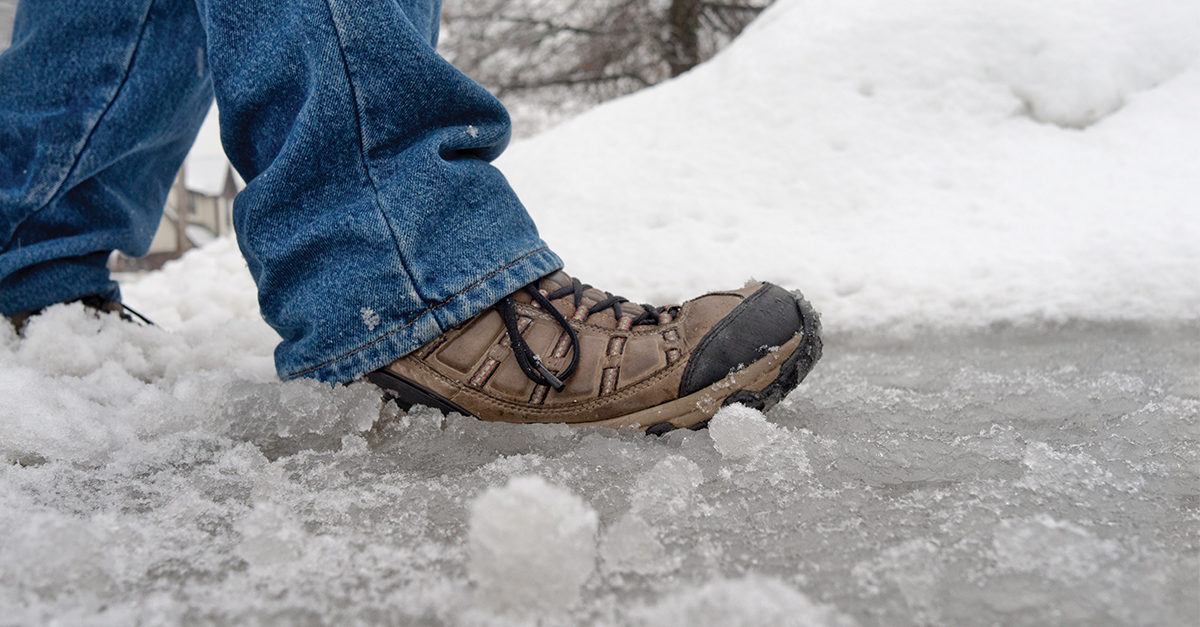Every season has its own unique characteristics that can contribute to damaging hard floors. In the northern United States, winter is often the most challenging. Rock salt, ice melt, slush, and moisture can wreak havoc on hard floor surfaces of all kinds. Since the floor is the most used surface in any facility or office, protect your facility’s investment with a seasonal plan for hard floor care.
The Best Offense is a Good Defense
It’s best to start your interior floor program on the exterior of the building by implementing a good matting program. Because hard floor maintenance in a facility starts before the front door, it’s best to start with 15 feet of scraper mats lining the sidewalk. Then, place transition mats just inside the doorways. Finally, position absorbent mats just beyond the doorway and leading into the reception area. Each of these tools plays a key role in protecting the floors as well as reducing slip-and-fall injuries.
Note: Scraper mats can hold eight to 10 times their weight in dirt and debris, which means they can be extremely heavy if not properly cleaned. This can lead to back strain for employees and time out for health reasons, so be sure to keep this in mind when assigning work.
Education and Training
Educating employees, cleaners, custodial staff, and day porters is a big part of a floor maintenance program. Once matting is in place, address the area around the door. Internal staff or maintenance staff should clear away snow or slurry buildup. Because landscaping may be maintained by in-house staff or a property management company, be clear about who’s responsible for what before starting exterior work.
Keep it Clean and Dry
On average, 90 percent of the soils that enter a facility come in on shoes. In the fall when it’s wet, and in the winter when it’s cold and wet, building occupants can track soil and moisture further into a facility than during any other time of the year. Studies show that flooring located 150 feet from entry points can still show signs of debris from footwear.
Add Wear-off Layers
In preparation for winter, consider adding additional wear-off coats of finish to any hard floor. These wear-off coats will ensure the flooring beneath is protected.
- Vinyl composition tile and luxury vinyl tile: Top scrub and apply five additional coats. Some companies will completely avoid top-scrubbing through winter. Often, they assume the floors will be a mess anyway, and do not bother with it. “Haze” and salt residue on flooring can cause damage. Friction between footwear and dried salt crystals can etch and damage floor surfaces beyond repair, forcing replacement costs.
- Marble: Marble can be refinished up to twice annually and requires specialized materials. One simple step to increase lifespan and reduce cost is to increase dust mopping in the course of the day. Marble surfaces are typically honed with a “diamond pad.” Because refinishing frequency is limited on marble floors, this adds to the importance of investing in proper matting.
Does Shiny Mean Slippery?
Based on information on current cleaning materials, a shiny floor actually offers better traction. That may seem counterintuitive, however all current materials on the market today should meet American National Standards Institute standards. This plan for the coefficient of friction means a clean floor is statistically safer.



